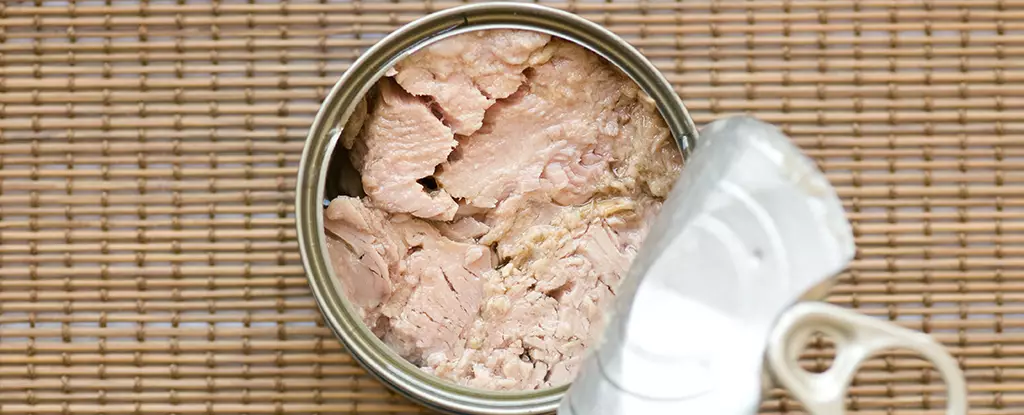In recent years, the nutritional merits of incorporating fish into our diets have been increasingly discussed, particularly given its presence in the heart-healthy Mediterranean diet. Fish, especially fatty varieties like tuna, is celebrated for its rich content of omega-3 fatty acids, which are essential for brain health and have been linked to a reduction in heart disease. However, lurking beneath these nutritional benefits lies a significant concern: mercury contamination. This neurotoxin accumulates in fish, especially those higher up the food chain, leading to health advisories that can deter even the most enthusiastic seafood eaters. The juxtaposition of these health benefits with the risks of mercury ingestion has led scientists to explore innovative ways to reduce toxicity in our favorite marine staples.
A Breakthrough in Canned Tuna Safety
Recent advancements from researchers at the Swedish University of Agricultural Sciences and Chalmers University of Technology have identified an exciting solution to tackle the mercury issue in canned tuna. The novel approach involves enhancing the packing process with the incorporation of the amino acid cysteine. Lab experiments reveal that this method can effectively remove 25 to 35 percent of mercury from tuna when the fish is treated with a cysteine solution. Given the high mercury levels often found in canned tuna, this breakthrough could redefine our consumption patterns, allowing more people to enjoy tuna without the associated fear of mercury buildup, especially in vulnerable populations like pregnant women and young children.
The Science Behind the Methodology
Cysteine’s selection for this application is grounded in the chemical nature of mercury – a heavy metal known to form strong bonds with the amino acid. By immersing canned tuna in a solution containing cysteine, researchers discovered they could draw out considerable amounts of mercury, subsequently detected in the liquid. Notably, the effectiveness was directly proportional to the surface area of the fish exposed to the solution, highlighting its potential for wide-scale application. Such innovations not only hint at an immediate solution but also emphasize the possibility of evolving food packaging standards to enhance safety and health.
Innovative Packaging: The Future of Fish Consumption
The implications of this technique extend beyond mere mercury reduction; they herald a new era of active food packaging. “The beauty of this type of packaging is that it is active while the product is on the shelf,” says Przemyslaw Strachowski, a chemist involved in the research. This suggests that the potential for maintaining food safety could be seamless, without additional processing steps required. While it’s essential to continue exploring the long-term effects and practicality of this method, the preliminary findings are sufficiently promising to fuel the desire for further investigation.
Health Benefits vs. Health Risks: Striking a Balance
It’s crucial for consumers to remain informed about the levels of mercury in fish they consume. Fortunately, most individuals who enjoy fish do not typically ingest harmful amounts of mercury. The nutritional advantages of consuming fish largely surpass the potential risks, particularly when care is taken to mitigate contamination. However, the advent of cysteine-treated tuna presents an exciting opportunity to further tilt this balance towards a safer consumption experience.
Additionally, this breakthrough isn’t merely about preserving tuna; it could set the stage for broader applications across various aquatic protein sources, enhancing food safety industry-wide. “Our study shows that there are alternative approaches to addressing mercury contamination in tuna,” adds food scientist Mehdi Abdollahi, emphasizing a proactive stance rather than solely relying on restrictive consumption advisories.
While further research is vital to ascertain how to implement this innovative approach effectively, its promise brings hope to consumers wanting to enjoy the myriad benefits of seafood without compromising their health. The desire for safe, nutritious food options is universal, and science continues to pave the way toward making this a reality.

